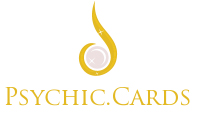Are you someone that is curious about Tarot cards and readings? Maybe you have tried this for yourself, but you don’t know what the difference is between the spreads. Here is an understanding of the different spreads:
One Card Pull
A one-card reading can answer questions that you have that are straightforward. The answers can be clear, and you can use the one card for things such as:
- Yes or no questions.
- Getting reassurance on something you need to feel good about.
- Getting guidance.
Shuffle the cards and pick a card that you feel is out of the deck. See how it makes you feel. Trust anything that you think in your mind and think about your first impression. Do you see a color or a word on the card that gives you information? Then, take action on the card. Finally, focus on the question you asked.
Three Card Spread
This spread is very popular, and many beginners use it. This can answer questions such as:
- Questions about the past or future.
- Actions and outcome.
- Strengths.
- Weaknesses.
- What you want in life.
- Where you want to be.
- Your relationships.
These things are endless, and you can use this spread for almost anything. Set your intention on what you want, and then pull out three cards. Give each of the cards meaning in your past, present and future. Once you ask your question, see what your answers are and what messages you get.
Celtic Cross Spread
This is one of the most popular reading spreads. This can help if you are trying to find love and get details. This is one you will use often.
This is associated with the Celts and will help you with a circle and a cross forming. You will use 1 and 2 cards for the cross.
See that this sign means wisdom, and the symbol of the four elements can be where your spiritual destination is. Meditate on what you lay down.
The left side of the cross will have 6 cards and will move clockwise and up. The right side will have 7-10 cards, and the upward will have 7 and the bottom 10.
There are different ways you can do the reading; use your intuition:
- The first card and middle are the question.
- The second card is the situation you are in.
- The third card is what is going on behind the scenes.
- The fourth card is the past.
- The fifth card is what could be.
- The sixth card is the future.
- The seventh card is what you need to stop being afraid of.
- The eighth card is what you feel about the situation.
- The ninth card is the hopes and dreams that the client has.
- The tenth card is the final outcome.
Trusting the Tarot Cards
There are so many different spreads that you will never use them all. Learn the new spreads, and then pick the ones that work best for you and what you want. Make sure that you are comfortable and familiar with the spread and reading you do. This can help you to practice and get good at doing readings. Never be afraid of Tarot or to try it on your own, that is how you grow.


The article demystifies Tarot readings by breaking down the different spreads. It’s a good starting point for anyone looking to understand the basics.
It’s interesting to see how each type of spread serves a different purpose and provides various levels of insight. The Celtic Cross Spread, in particular, seems quite intricate.
I appreciate the detailed guidance on interpreting the cards. Trusting one’s intuition appears to be a recurring theme, which seems essential in Tarot readings.
The content does a good job of encouraging readers to practice and become comfortable with different spreads. Confidence and familiarity seem key to effective Tarot readings.
The article offers a comprehensive overview of different Tarot spreads. The step-by-step explanation for each type of spread would certainly be beneficial for beginners.